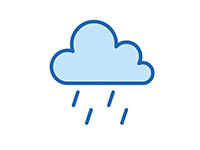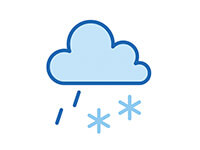
Tysers announces senior roles for Tysers Singapore
Tysers is delighted to announce the appointment of Babita Rai as CEO, Tysers Singapore, and William Furness-Smith as Head of Marine, APAC. Babita Rai Babita…
You are using an outdated, unsupported browser that may not display this website properly.
Please upgrade to a modern browser for a better browsing experience. We suggest:
Changing weather patterns in the UK have led to increased weather and climate related risks for business owners. Climate change and the resulting change in weather patterns has also created a shift in risk and how risk is managed.

The Beast from the East took place in 2018 and created significant damage across the UK. These extreme Winter conditions were caused by easterly winds coming into the UK, catching everyone by surprise and severely impacting homes, businesses, travel and essential services. Those without the right insurance cover in place were also unprepared for the financial impact of extreme cold and storm damage to their homes and businesses.
Insurers and underwriters also faced an unprecedented rise in claims following the storm, presenting some difficulties as policyholders across the UK were impacted, unlike more typical cases of extreme weather which are usually localized to one region.
Over recent years the UK has seen many shifts in weather patterns, leading to increasing risks associated with extreme weather and flooding. Below is an overview of some of the major changes and how these have impacted policyholders:

Parts of our country have experienced more intense rainfall than before. Increased rainfall elevates flood risk levels in regions that would not have previously been considered at high risk of flooding. Furthermore, increased rainfall in the UK creates further risks associated with soil erosion and infrastructure quality. Our crops and livestock are negatively impacted and the distribution of goods and services becomes complicated and more expensive. Increased rainfall also causes higher humidity, making us more susceptible to further health issues and the spread of diseases.
Increased rainfall and risk of flooding has impacted both homeowners and a wide range of commercial sectors. These range from business owners with properties in higher-risk flood areas who may find it increasingly difficult to secure adequate cover, to those working in agriculture, transportation and logistics who face new challenges due to increased flooding risk and soil erosion.

Changes in weather patterns has also seen the UK experience milder winters with fewer cold spells and an overall decrease in the days we see snowfall. Some regions have been more affected than others, with the southernmost areas of the UK generally experiencing the mildest weather over the winter months. This shift in temperatures has also altered the growing seasons for agriculture, and an increase in the pest population which has a direct impact on growing and distribution of crops. Flowering seasons for plants and crops has also been impacted and bird migration patterns are changing due to the shifting weather patterns. Energy consumption patterns have also changed alongside these changes in temperatures, with a growing need for more robust cooling solutions.

Our changing UK weather patterns also include a higher frequency of more intensive heatwaves, which has also negatively impacted our agricultural sector. These changes mean that on average Spring arrives sooner each year and Autumn lasts longer into the year. The risk of wildfires has also increased with more frequent spells of hot, dry weather, which has the potential to impact homes and businesses as well as decreasing the air quality levels. Water resources are also put under increasing pressure during spells of hot, dry weather meaning water saving measures such as hosepipe bans are increasingly needed. Changing weather patterns have also disrupted the wildlife ecosystems in the UK causing a growth in pest populations and diseases.

The changing weather patterns in the UK have combined to change the risk profiles we have grown accustomed to. A host of new risks must be considered:
Enlisting the help of an experienced risk management specialist can help you mitigate the risks associated with changing weather patterns and ensure that you can continue operating effectively and efficiently, with the best protection possible.
At Tysers, we pride ourselves on being at the forefront of changes to trends and we consider risk management very carefully. Adverse and significant weather patterns affect us all. At Tysers we are engaging with all concerned stakeholders to consider closely the impact of these extremely unpredictable and difficult to plan for risks that affect our policyholders the most.
Tysers is delighted to announce the appointment of Babita Rai as CEO, Tysers Singapore, and William Furness-Smith as Head of Marine, APAC. Babita Rai Babita…
Tysers’ Marine Claims team is led by Chris Sydenham, Chairman and Karl Haynes, Managing Director, and prides itself on providing a dynamic response to handling…
